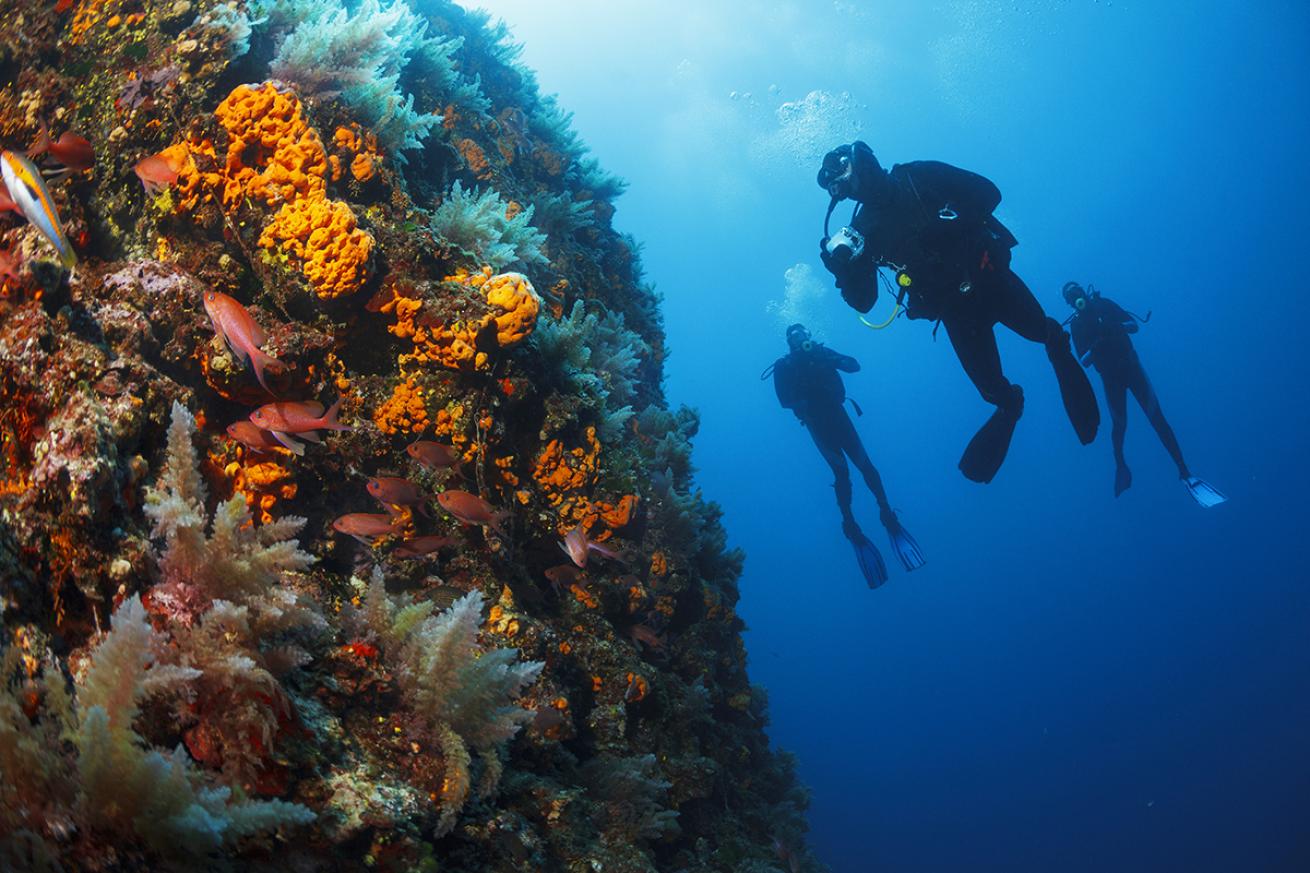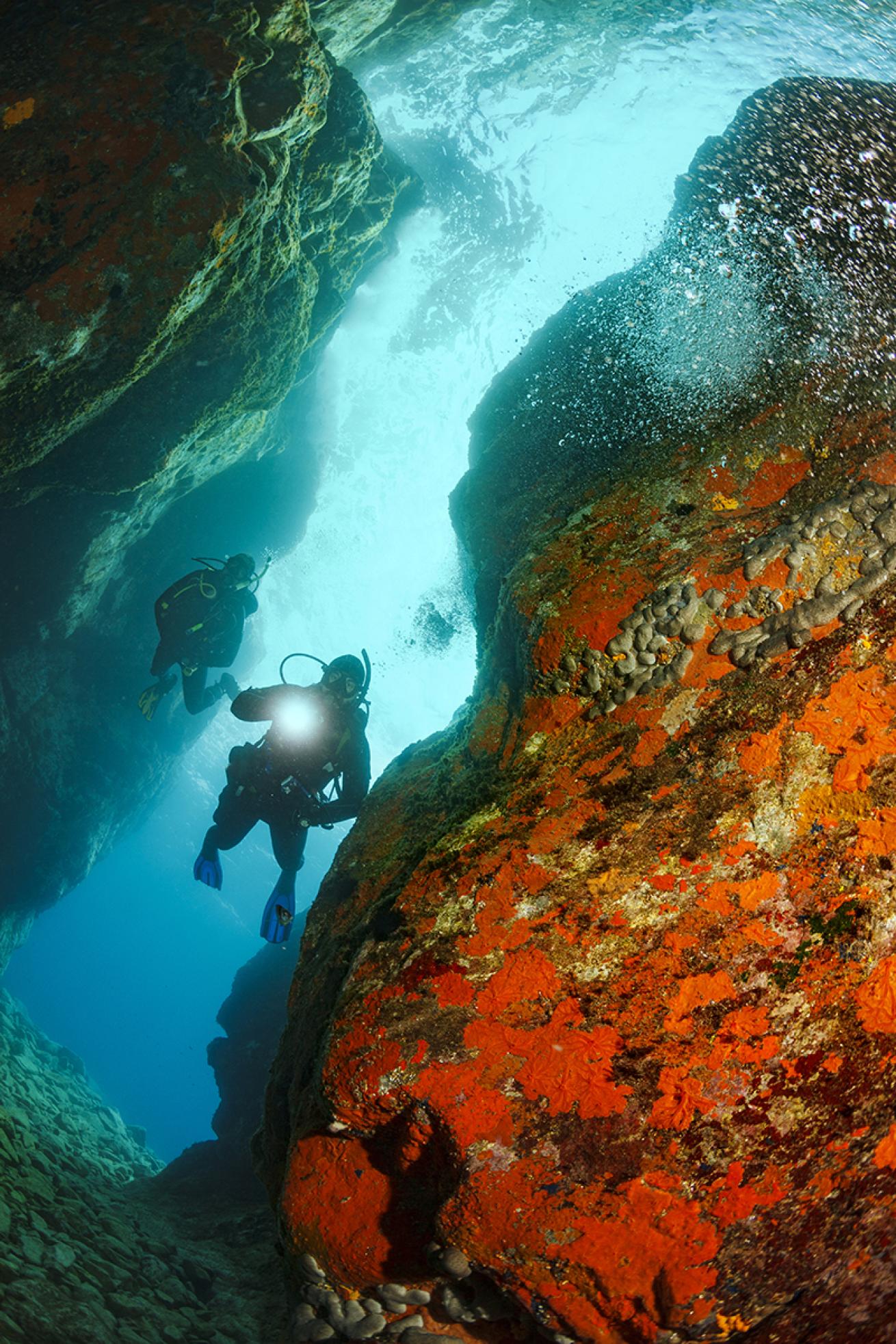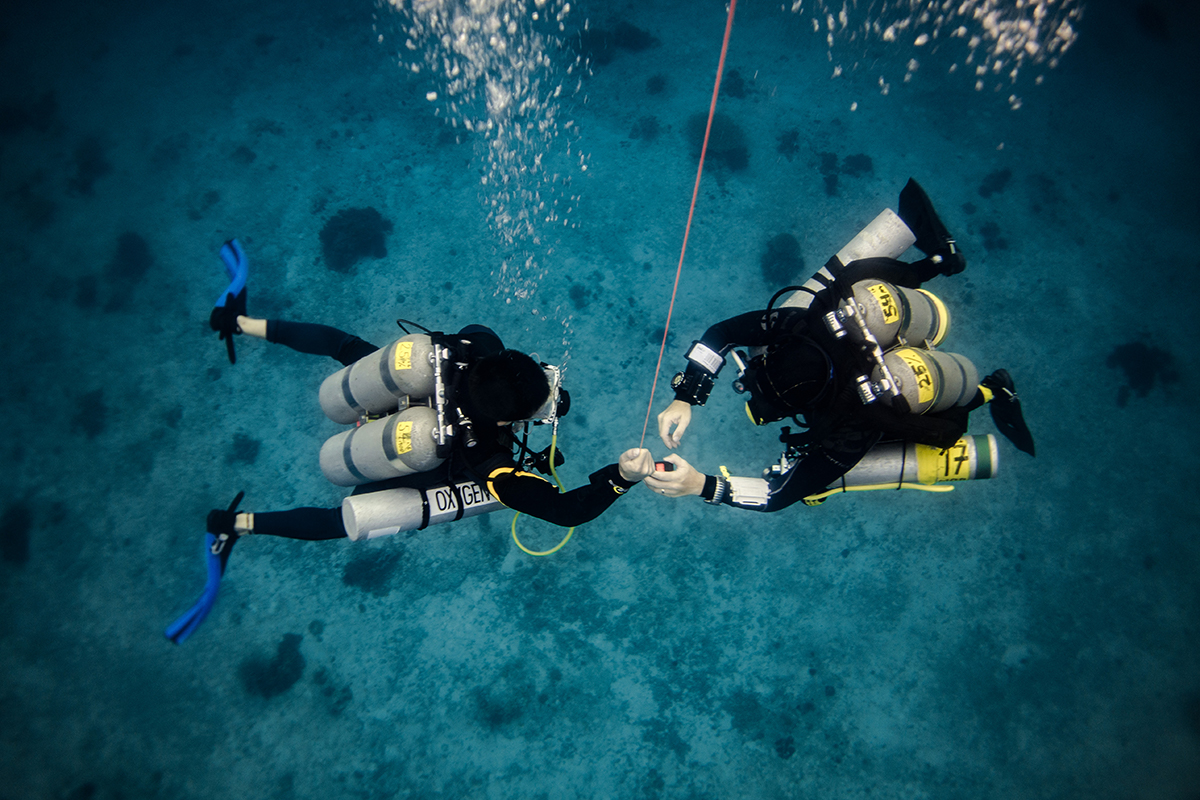How Deep Can You Scuba Dive?

istockphoto.com/ultramarinfotoA recreational diving limit of 130 feet can be traced back decades.
The deepest your typical recreational scuba diver can go is 130 feet. In order to venture further and explore wrecks, caves and other sites beyond 130 feet, these agencies — such as PADI, NAUI and SSI — require “technical” certifications.
These and other dive training yardsticks are based on a series of guidelines and rules of thumb, but no two divers are the same. Everyone is impacted by nitrogen narcosis, DCS and other variables differentlySo why has every major training agency established 130 feet — 40 meters — as the recreational diving depth limit? This precedent can be traced to the U.S. Navy, which established the rule in the 1950s and still requires special permission from a commanding officer for a diver to exceed this limit.
How Deep Can You Dive Without Decompressions?
“The 130-foot limit is an arbitrary depth originally adopted by the U.S. Navy because it gave Navy divers about 10 minutes of (no-deco) time on compressed air; going any deeper on air made no sense to the Navy because the time available to do useful work was simply too short,” writes Lawrence Martin in Scuba Diving Explained: Questions & Answers on Physiology and Medical Aspects.
Sure, you can go deeper than 130 feet without mandatory decompression stops, but you’re not going to have much time to get anything done. The lack of dive time at such depths — and increased risk of being impacted by nitrogen narcosis — prevents scuba divers from going deeper than 40 meters
“(130 feet) is an appropriate limit for single-cylinder no-stop diving with air because of the short no-stop time you have, plus the relatively quick consumption of your gas supply,” says Karl Shreeves, PADI’s technical development executive. “It is also the depth by which almost all divers begin to find gas narcosis noticeable.”
Dive Tables Offer Safe Diving Depths
Another factor to consider is the U.S. Navy’s dive table, which lists a dive to 140 feet as having the same no-deco limits as a dive to 130 feet. Both allow for 10 minutes of no-deco time, so why not set the recreational diving limit to 140 feet?

istockphoto.com/ultramarinfotoSpecial equipment and training can make diving beyond 130 feet much more safe.
“With tables, even going 1 foot beyond the increment mandates you move to the next increment. So, if you had a maximum depth of 140 feet and allowed yourself to descend to 141 feet, by the tables you would have to calculate the dive as 150 feet,” says Eric Douglas, a scuba safety writer and former instructor. “If you failed to notice that until you returned to the surface, you could be in a situation where you had omitted obligated decompression and, according to the tables, you couldn't dive for 12 to 24 hours.” So a limit of 130 feet allowed a slight margin for error — a welcome factor for divers who’d never heard of a dive computer.
Times have changed. Almost every recreational diver now sports a computer and a regulator that breathes smoothly beyond 130 feet. So why does every major training agency require a “technical” certification to venture beyond? Simply put: Better safe than sorry.
“Tec diving, which emerged in the late 1980s, uses high capacity cylinders and/or CCRs (closed-circuit rebreathers), plus helium-mix gases, to go deeper than 130 feet while reasonably managing the associated risks,” says Shreeves. “With such equipment and the associated training, the dive community recognizes that the 130-foot limit doesn't apply.”
Want to dive deep? Become an Advanced Open Water diver to start your adventure today.
There are plenty of valid reasons to dive deep, but it requires a thorough knowledge of decompression stops, emergency procedures and the effects of nitrogen narcosis. At face value, the 130-foot limit seemingly decreases training agencies’ liability by encouraging divers to stay shallow. But it’s not necessarily a good thing, according to author and dive pioneer Brett Gilliam.
“This has come back to haunt the certification agencies in two ways,” writes Gilliam in Deep Diving: An Advanced Guide to Physiology, Procedures and Systems. Gilliam goes on to say that many divers ignore the 130-foot limit and deny ever making those “outlawed” dives, “distorting diving trends and statistics.” Furthermore, “increasingly more diving personal injury and wrongful death lawsuits are litigated on arguments of negligence based solely on the depth of the dive exceeding the ‘safe’ limit of 130 feet.”
Thus a 1950s precedent rooted in practicality and caution still impacts divers today.
“This has come back to haunt the certification agencies in two ways,” writes Gilliam in Deep Diving: An Advanced Guide to Physiology, Procedures and Systems.
Gilliam goes on to say that many divers ignore the 130-foot limit and deny ever making those “outlawed” dives, “distorting diving trends and statistics.” Furthermore, “increasingly more diving personal injury and wrongful death lawsuits are litigated on arguments of negligence based solely on the depth of the dive exceeding the ‘safe’ limit of 130 feet.”
Thus a 1950s precedent rooted in practicality and caution still impacts divers today.











